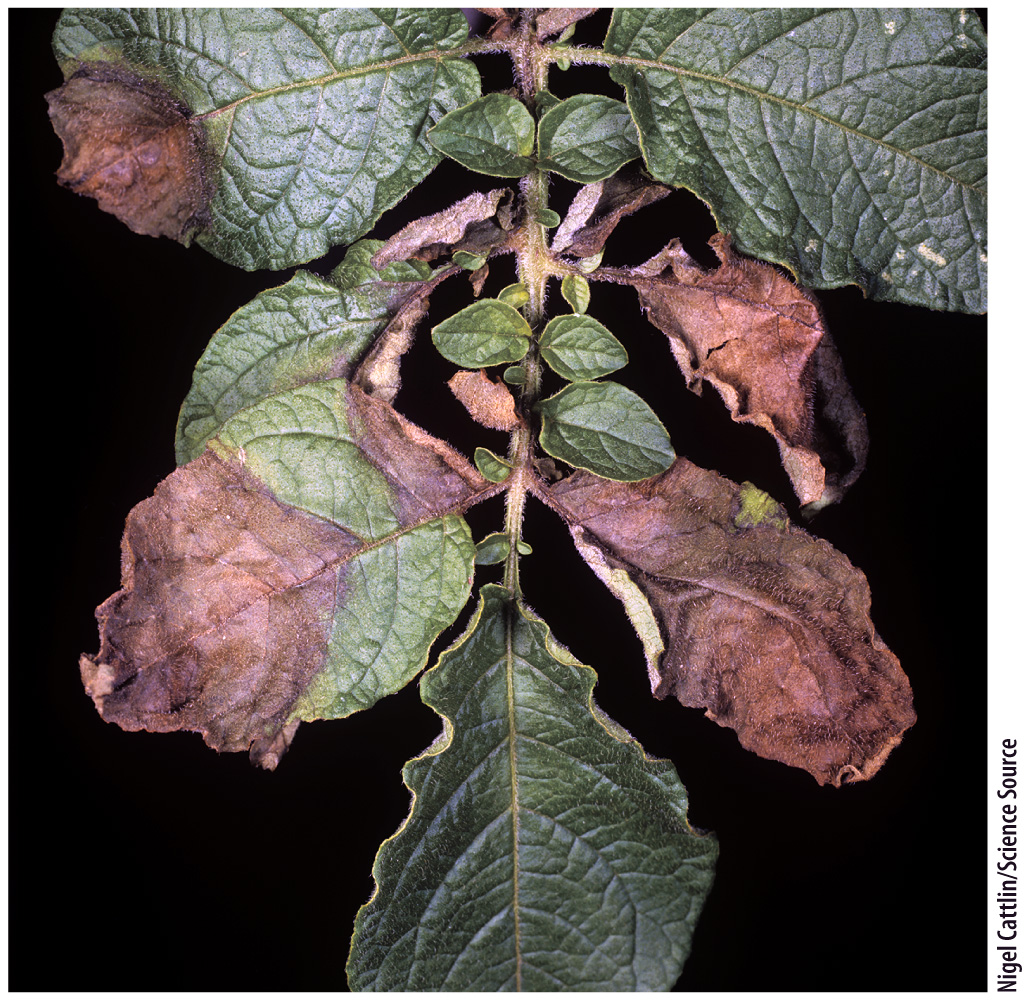32.1 Protection Against Pathogens
In September 1845, potato plants across Ireland began to die. Their leaves turned black and the entire plant began to rot. When the potatoes were dug up, those that were not already rotten soon shriveled and decayed into a foul-
Phytophthora infestans is one example of the diverse pathogens that infect plants. Plant pathogens include viruses, bacteria, fungi, nematode worms, and even other plants, but what they all have in common is the ability to grow on and in the tissues of plants, extracting resources to support their own growth and causing an array of diseases. The outcome for the plant is often death (Fig. 32.1). The fact that most plants appear disease free is testimony to their ability to defend themselves. Plants have an immune system that allows them to recognize and respond to pathogens that would otherwise exploit them. In the Irish potato famine, which lasted from 1845 to 1852, these defenses were breached, allowing P. infestans to spread and grow with devastating effects on the potato crop and, in consequence, the people of Ireland.
